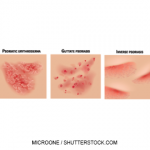 On July 29, the U.S. Food & Drug Administration (FDA) approved ustekinumab (Stelara) to treat children aged 6 years and older with active psoriatic arthritis (PsA).1,2
On July 29, the U.S. Food & Drug Administration (FDA) approved ustekinumab (Stelara) to treat children aged 6 years and older with active psoriatic arthritis (PsA).1,2
Ustekinumab is a human monoclonal antibody that targets the p40 subunit of interleukin 12/23. It was originally FDA approved in 2009 to treat adults with moderate to severe plaque psoriasis. The agent’s indications have expanded to include the treatment of children with moderate to severe plaque psoriasis, adults with PsA, adults with moderate to severe Crohn’s disease and adults with moderate to severe ulcerative colitis.3
The FDA based this approval on pharmacokinetic data, extrapolating established efficacy and existing safety information from multiple phase 3 studies in both adults and children with moderate to severe plaque psoriasis who also had PsA, as well as from adults with active PsA.
Approved labeling for ustekinumab in pediatric patients age 6–17 years old includes weight-based dosing, with an initial administration of the subcutaneous formulation followed by a subsequent dose four weeks later and every 12 weeks, thereafter. The dosing is: 0.75 mg/kg for patients weighing less than 60 kg, 45 mg for patients weighing 60–100 kg and 90 mg for patients weighing more than 100 kg and who have concomitant moderate to severe plaque psoriasis.
Background
CADMUS was a one-year study that evaluated ustekinumab in adolescents aged 12–17 years old with active psoriasis.4 For the study, 110 patients were randomly assigned to receive either standard dosing or half-standard dosing of ustekinumab. Dosing was weight based. In the standard-dosing group, patients received:
- 75 mg/kg of ustekinumab if they weighed 60 kg or less;
- 45 mg of ustekinumab if they weighed more than 60 kg but less than 100 kg; and
- 90 mg of ustekinumab if they weighed more than 100 kg.
In the half-standard dosing group, patients received:
- 375 mg/kg of ustekinumab if they weighed 60 kg or less;
- 5 mg of ustekinumab if they weighed more than 60 kg but less than 100 kg; and
- 45 mg of ustekinumab if they weighed more than 100 kg.
Ustekinumab was given on weeks 0 and 4, and then every 12 weeks thereafter. At week 12, patients randomized to the placebo group crossed over to receive standard or half-standard dosing of ustekinumab.
The study assessed the proportion of patients achieving a physician’s global assessment (PGA) score of cleared/minimal (0/1), the proportion of patients obtaining at least 75% improvement in the Psoriasis Area and Severity Index (PASI 75) and the proportion of patients obtaining at least 90% in PASI (PASI 90). Adverse events were monitored through week 60.
The results: At week 12, 67.6% of patients in the half-standard dosing group and 69.4% of patients in the standard dosing group achieved PGA 0/1 compared with only 5.4% of patients in the placebo group (P<0.001). Additionally at week 12, PASI 75 was attained by 78.4% of patients in the half-standard dosing group, 80.6% of patients in the standard dosing group and 10.8% of patients in the placebo group. PASI 90 was attained by 54.1% of patients in the half-standard dosing group, 61.1% of patients in the standard dosing group and 5.4% of patients in the placebo group. The proportion of patients who received ustekinumab and achieved PASI 75/90 was significantly greater than patients who received placebo (P<0.001).
Health-related quality of life improved significantly through week 12 in patients who received ustekinumab (P<0.05 for half-standard dosing group; P< 0.001 for standard-dosing group). Patients in all groups reported adverse events through week 60. (Note: The most common adverse events in psoriasis clinical trials of ustekinumab were nasopharyngitis, upper respiratory infections, headache and fatigue. These adverse events were similar to those seen in clinical trials of adults taking ustekinumab.)
This study showed that ustekinumab was a beneficial treatment in adolescent patients through one year, without patients experiencing any unexpected adverse events.
Michele B. Kaufman, PharmD, BCGP, is a freelance medical writer based in New York City and a pharmacist at New York Presbyterian Lower Manhattan Hospital.
References
- News release: Stelara (ustekinumab) approved by the U.S. Food & Drug Administration to treat pediatric patients with active psoriatic arthritis. 2022 Aug 1.
- Biologics license application approval letter: Stelara (ustekinumab). 2009 Sep 25.
- FDA highlights of prescribing information: Stelara (ustekinumab). 2022 July 29.
- Landells I, Marano C, Hsu M-C, et al. Ustekinumab in adolescent patients age 12 to 17 years with moderate to severe plaque psoriasis: Results of the randomized phase 3 CADMUS study. J Am Acad Dermatol. 2015 Oct;73(4):594–603.


